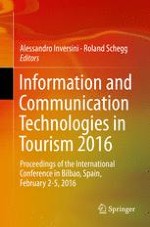2016 | OriginalPaper | Buchkapitel
Tracking Tourist Spatial-Temporal Behavior in Urban Places, A Methodological Overview and GPS Case Study
verfasst von : Lenka Kellner, Roman Egger
Erschienen in: Information and Communication Technologies in Tourism 2016
Aktivieren Sie unsere intelligente Suche, um passende Fachinhalte oder Patente zu finden.
Wählen Sie Textabschnitte aus um mit Künstlicher Intelligenz passenden Patente zu finden. powered by
Markieren Sie Textabschnitte, um KI-gestützt weitere passende Inhalte zu finden. powered by
